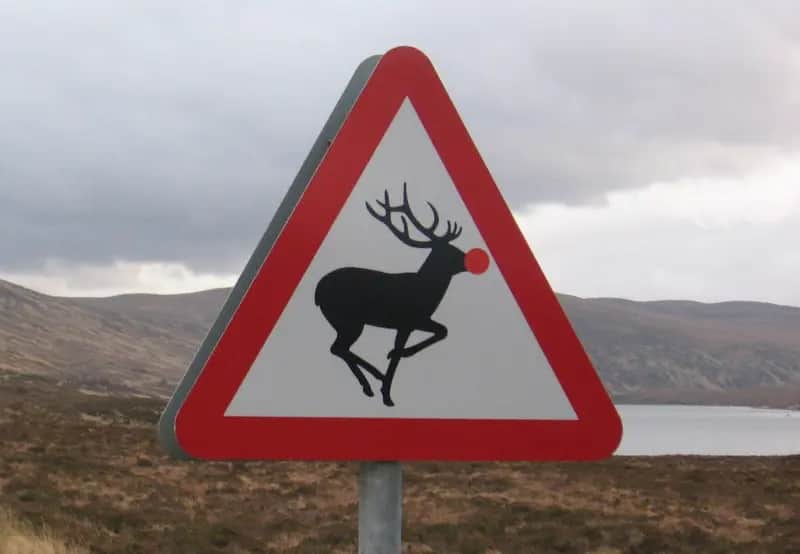HIDDEN CORNERS AND SOARING CRAGS – THE WANDER OF GLEN DOLL

TAKING THE HIGH ROAD: Looking down from the craggy tops of the ridge above the passage of Jock's Road

LONELY and LOVELY: Canness Glen
STRAVAIG, the act of wandering casually or aimlessly, has long been one of the finest and most evocative words in the hillwalkers' lexicon.
It derives from the 18th Century Scots 'extravage' meaning to wander about, digress or ramble (in speech), but can be traced further back to the Medieval Latin 'extravagari', to stray beyond limits.
It's been a while since I managed to stay completely true to the word. For obvious reasons of safety and security, most mountain days are well mapped and planned in advance. But the other day, appropriately more by accident than design, I enjoyed a magical mystery tour of my home territory in the Angus glens, the choice of route constantly evolving and throwing up surprises.
Even the decision to go to Glen Doll was last-minute. I had been aiming to go further afield but the drive just wasn't there. There was no chance of making the required early start. The recent completion of my fourth Munros round, followed by a week lazing around on the Costa Del Sol, and the thought of a long journey on Bank Holiday weekend roads definitely contributed to the sloth factor.
Even the odds of a trouble-free escape anywhere west of Dundee were lessened by the prospect of diversions and hold-ups due to Radio 1's Big Weekend being in town. Instead, I decided to stick to the quiet back roads and take the easiest option.
I still had no idea where I was going even as I laced up my boots in the surprisingly quiet Glen Doll car park. The damage from the storms of 18 months ago is still being cleared, but most of the routes are now passable, albeit with some short diversions so there was plenty of choice.
That old favourite, Broad Cairn, was the first thought. From there I could either circuit back over Cairn Bannoch or via the Capel Mounth. But then I just started walking on the forestry track towards the familiar passage of Jock's Road. The next decision would be made when I reached Davy's Bourach at the top of the path, the perfect spot for lunch in the sunshine. This rough emergency shelter is under the care of the Forfar and District Hillwalking Club and they deserve a lot of praise for the recent repairs and upgrading work.
I left the next decision to my feet, and they led me off path to cross the White Water on a north-westerly line for the easy push to the flat summit of Tom Buidhe. Its neighbouring Munro, Tolmount, was just a hop and a skip away, but instead I dropped gently south through boulder, heather and bog, heading to the crags above Canness Glen, an area known as The Dacies. As I stared down at the River Isla snaking off into the distance, the silence was broken by a thundering off to the right, a large herd of deer obviously unused to being disturbed in this otherwise tranquil feeding place.
I picked my way east across the top of slabs and deep green V-fractures for the short climb to Little Kilrannoch, where the boggy summit plateau was dotted with thriving white clumps of Mountain Scurvy Grass (Cochlearia Micacea), and then on to Meikle Kilrannoch. These innocuous rounded humps may not raise much excitement in mountaineering terms but their slopes and others around the head of Glen Isla host some rare Alpine plants and are a magnet for botanists.
Next destination on this grand tour was a walk along the top of The Dounalt, the line of crags above Glen Doll. These looked impressive from below on the walk in, and they didn't disappoint, the deep breaks in the skyline producing superb bird's eye peeks of the snail trail of Jock's Road across the glen.
The corner standpoint of Craig Rennet was the turning point, marking another uphill push along the edge of Erne Craigs, the next set of plunging rock faces. I then passed below the Knapps of Fee and over the top of the waterfall to find the Mayar path heading down into Corrie Fee. Five hours walking and this was the first time I definitely knew which way I had to go.
I had given my boots full autonomy and found a few hidden corners of what I thought was familiar territory and gained a different perspective on some old favourites.
Tolkien knew what he was talking about when he wrote: Not all those who wander are lost. Although he might have seen it differently had he visited the Cairngorms in high summer.

